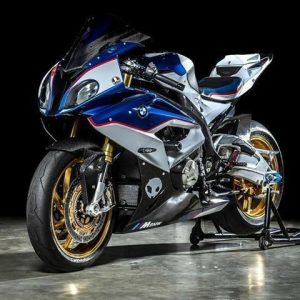The freedom of cruising down a scenic highway on a motorcycle is an exhilarating experience. But before you hop on a bike and twist the throttle, it’s crucial to understand the essential gear, licensing requirements, and safety practices for responsible motorcycling. This comprehensive guide explores everything you need to ride a motorcycle, ensuring a smooth, legal, and most importantly, safe journey.
Essential Gear for Motorcycle Riders
Safety is paramount when riding a motorcycle. Unlike a car’s protective shell, riders rely on proper gear to minimize injury in case of an accident. Here’s a breakdown of the essential motorcycle gear:

- Helmet: This is non-negotiable. By law, all motorcycle riders and passengers must wear a Department of Transportation (DOT) approved helmet. Look for a snug, comfortable fit that doesn’t obstruct your vision.
- Eye Protection: A full-face helmet with a visor offers optimal protection. Goggles or a motorcycle-specific helmet with a removable visor are alternatives, shielding your eyes from wind, dust, and debris.
- Jacket: Invest in a high-quality motorcycle jacket made of abrasion-resistant materials like leather or heavy textile. Look for features like padding in key areas like elbows, shoulders, and back.
- Pants: Similar to the jacket, choose sturdy motorcycle pants with abrasion resistance. Consider pants with built-in knee and hip protectors for added security.
- Gloves: Protect your hands with motorcycle gloves offering knuckle protection and abrasion resistance. Leather or textile gloves with good grip are ideal.
- Boots: Sturdy boots with good ankle support are crucial. Avoid loose footwear that could get tangled in the controls. Motorcycle-specific boots often offer additional protection features.
Remember, this gear is an investment in your safety. Don’t compromise on quality or fit when choosing your motorcycle apparel.
Motorcycle Licensing Requirements
Operating a motorcycle legally requires proper licensing. The specific steps and requirements can vary slightly by state, but generally involve the following:

- Motorcycle Permit: Most states require a motorcycle learner’s permit before obtaining a full motorcycle license. This permit allows you to practice riding under certain restrictions, often with a licensed rider accompanying you.
- Motorcycle Knowledge Test: You’ll need to pass a written knowledge test that covers motorcycle laws, safe riding practices, and motorcycle operation.
- Motorcycle Skills Test: This practical skills test demonstrates your ability to safely maneuver a motorcycle in a controlled environment.
Consult your state’s Department of Motor Vehicles (DMV) website for specific licensing requirements and testing procedures. Some states offer motorcycle safety courses that can help you prepare for the skills test and hone your riding skills.
Beyond the Gear: Important Safety Practices
Even with the right gear, safe motorcycle riding requires ongoing awareness and responsible practices:
- Pre-Ride Inspection: Before every ride, get into the habit of performing a quick safety check of your motorcycle. This includes inspecting tires, brakes, lights, and fluid levels.
- Ride Defensively: Motorcyclists are less visible to other motorists. Practice defensive riding techniques, assuming other drivers might not see you. Ride predictably, maintain proper following distances, and avoid weaving in and out of traffic.
- Know Your Limits: Motorcycles handle differently than cars. Start slow, gradually increase your speed and confidence as your skills develop. Ride within your comfort zone and avoid exceeding the posted speed limits.
- Stay Alert and Avoid Distractions: Focus on the road and avoid distractions like using your phone or listening to music with headphones. Be aware of your surroundings, anticipate potential hazards, and react quickly to changing road conditions.
- Ride Sober: Alcohol and drugs significantly impair your judgment and coordination. Never ride a motorcycle under the influence of any intoxicants.
Additional Considerations for New Riders
Here are some extra tips for those just starting their motorcycle journey:

- Take a Motorcycle Safety Course: Enroll in a motorcycle safety course offered by your state’s DMV or a reputable motorcycle training organization. These courses provide valuable instruction on motorcycle operation, safety practices, and defensive riding techniques.
- Start on a Smaller Bike: Beginners are better suited to starting with a smaller, lighter motorcycle with lower power. This allows you to develop your skills and confidence before transitioning to a larger machine.
- Practice Regularly: The more you ride, the more comfortable and confident you’ll become. Find safe, open areas to practice your skills and build muscle memory for handling the motorcycle.
- Ride with a Buddy (When Possible): Especially in the beginning, consider riding with a more experienced rider who can offer guidance and support.
The Open Road Awaits: Invest in Yourself and Your Ride
By prioritizing safety through proper gear, acquiring the necessary licensing, and adopting safe riding practices, you can ensure your motorcycle adventures are not only enjoyable but responsible.
Finding the Right Motorcycle
Once you’re equipped with the knowledge and gear, it’s time to find the perfect motorcycle for your needs and riding style. Here are some factors to consider:

- Riding Style: Cruisers prioritize comfort for long rides, sportbikes are built for speed and performance, while touring bikes offer a blend of both. Consider how you plan to use the motorcycle most often.
- Engine Size: Larger engines offer more power and acceleration, but also come with higher fuel consumption and potentially more challenging handling for beginners.
- New vs. Used: New motorcycles offer warranties and peace of mind, but come at a premium price. Used bikes can be a good value proposition, but require thorough inspection to ensure their condition.
- Comfort: Spend time sitting on different motorcycles to find one that fits your body size and riding posture comfortably.
Taking these factors into account will help you narrow down your options and find the motorcycle that best suits you. Consider visiting motorcycle dealerships to test ride different models and experience their handling firsthand.
Maintaining Your Motorcycle
Regular maintenance is crucial for keeping your motorcycle running safely and reliably. Here’s a basic overview:
- Routine Maintenance: Follow the manufacturer’s recommended maintenance schedule for your specific motorcycle model. This typically includes tasks like oil changes, tire pressure checks, chain lubrication, and brake inspections.
- Learn Basic Maintenance: Equipping yourself with basic maintenance skills like changing oil and filters can save you money on service costs in the long run.
- Find a Reputable Mechanic: For more complex repairs or when you’re not comfortable tackling the task yourself, locate a qualified motorcycle mechanic with experience working on your specific bike.
Remember, a well-maintained motorcycle is a safe motorcycle. Prioritize regular maintenance to ensure your bike is in top condition for every ride.
Join the Motorcycle Community
The motorcycle community is a welcoming and passionate group. Here are some ways to connect with fellow riders:

- Motorcycle Clubs and Groups: Many motorcycle clubs and groups organize rides, events, and social gatherings. Joining a local club is a great way to meet other riders, explore new roads, and learn from experienced riders.
- Online Forums and Communities: Numerous online forums and communities cater to motorcycle enthusiasts. These platforms offer a space to ask questions, share experiences, and connect with riders across the globe.
Motorcycle ownership extends beyond just the machine. It’s about the journey, the camaraderie, and the sense of freedom that comes with exploring the open road on two wheels.
Invest in Your Safety, Invest in the Ride
By following the guidance in this comprehensive guide, you’re well on your way to experiencing the joys and thrills of ride a motorcycle. Remember, safety is paramount. Invest in the right gear, obtain the proper licensing, and prioritize safe riding practices. With knowledge, preparation, and a responsible approach, you can embark on countless adventures and create lasting memories on your motorcycle.